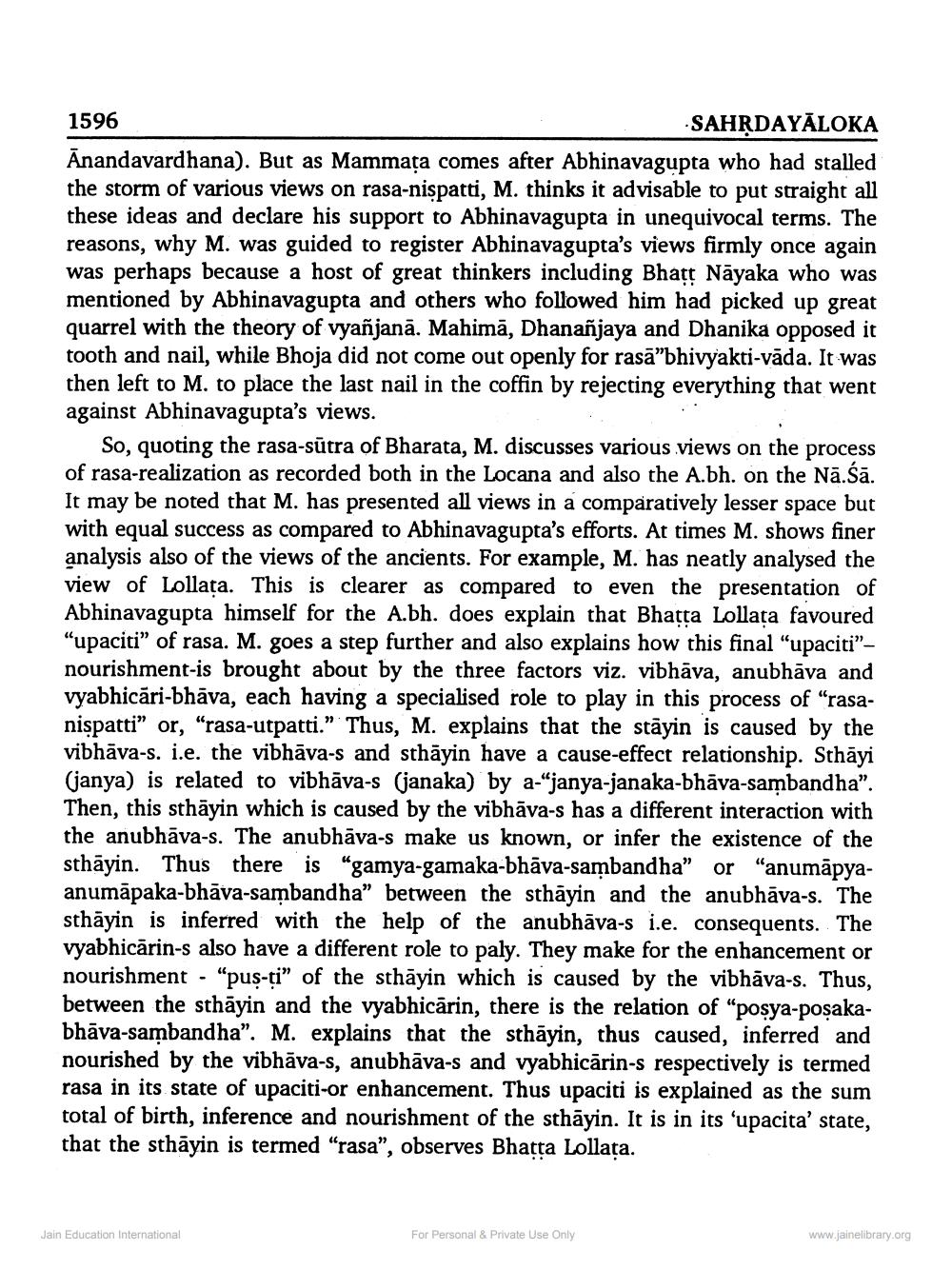________________
1596
SAHRDAYĀLOKA
Ānandavardhana). But as Mammata comes after Abhinavagupta who had stalled the storm of various views on rasa-nispatti, M. thinks it advisable to put straight all these ideas and declare his support to Abhinavagupta in unequivocal terms. The reasons, why M. was guided to register Abhinavagupta's views firmly once again was perhaps because a host of great thinkers including Bhatt Nāyaka who was mentioned by Abhinavagupta and others who followed him had picked up great quarrel with the theory of vyañjanā. Mahimā, Dhananjaya and Dhanika opposed it tooth and nail, while Bhoja did not come out openly for rasā”bhivyakti-vāda. It was then left to M. to place the last nail in the coffin by rejecting everything that went against Abhinavagupta's views.
So, quoting the rasa-sūtra of Bharata, M. discusses various views on the process of rasa-realization as recorded both in the Locana and also the A.bh. on the Nā.Śā. It may be noted that M. has presented all views in a comparatively lesser space but with equal success as compared to Abhinavagupta's efforts. At times M. shows finer analysis also of the views of the ancients. For example, M. has neatly analysed the view of Lollața. This is clearer as compared to even the presentation of Abhinavagupta himself for the A.bh. does explain that Bhatta Lollata favoured “upaciti” of rasa. M. goes a step further and also explains how this final "upaciti”nourishment-is brought about by the three factors viz. vibhāva, anubhāva and vyabhicāri-bhāva, each having a specialised role to play in this process of “rasanispatti” or, “rasa-utpatti.” Thus, M. explains that the stāyin is caused by the vibhāva-s. i.e. the vibhāva-s and sthāyin have a cause-effect relationship. Sthāyi (janya) is related to vibhāva-s (janaka) by a-“janya-janaka-bhāva-sambandha”. Then, this sthāyin which is caused by the vibhāva-s has a different interaction with the anubhāva-s. The anubhāva-s make us known, or infer the existence of the sthāyin. Thus there is "gamya-gamaka-bhāva-sambandha" or "anumāpyaanumāpaka-bhāva-sambandha” between the sthāyin and the anubhāva-s. The sthāyin is inferred with the help of the anubhāva-s i.e. consequents. The vyabhicārin-s also have a different role to paly. They make for the enhancement or nourishment - "pus-ti” of the sthāyin which is caused by the vibhāva-s. Thus, between the sthāyin and the vyabhicārin, there is the relation of “posya-posakabhāva-sambandha". M. explains that the sthāyin, thus caused, inferred and nourished by the vibhāva-s, anubhāva-s and vyabhicărin-s respectively is termed rasa in its state of upaciti-or enhancement. Thus upaciti is explained as the sum total of birth, inference and nourishment of the sthāyin. It is in its ‘upacita' state, that the sthāyin is termed "rasa", observes Bhatta Lollata.
Jain Education International
For Personal & Private Use Only
www.jainelibrary.org




